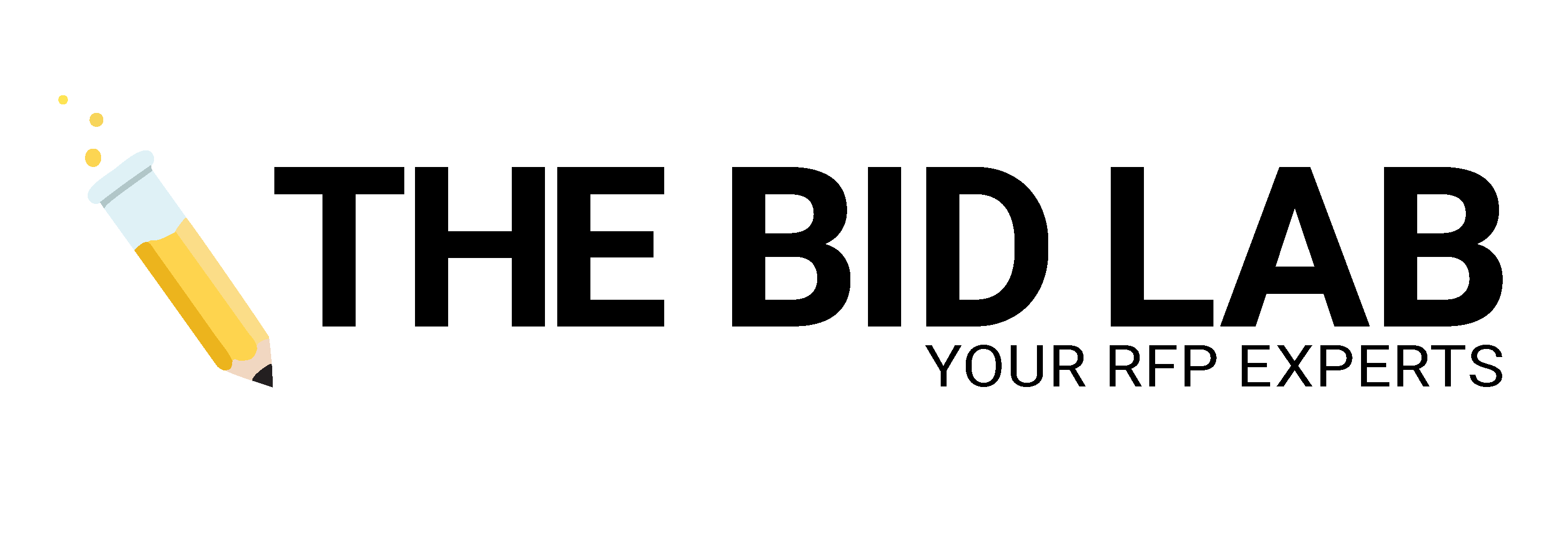How To Get More Women On Your Board & Executive Team


An Interview With Authority Magazine
Despite ongoing conversations about gender equality, a gap remains in the representation of women in board and executive leadership roles. It’s more than just numbers — it’s about the enriched perspective, creativity, and insight women bring to the table. What are some strategies, initiatives, and real-world practices that have successfully elevated women to board and executive positions? In this interview series, we are talking to C-suite executives who can share their experiences and insights about “How To Get More Women On Your Board and Executive Leadership Team”. As part of this series, we had the pleasure of interviewing Jordan Harary.
Jordan Harary President & Co-founder at The Bid Lab, The Bid Lab is the only RFP consulting firm of its kind. Specializing in guiding small and medium-sized businesses through the proposal response process.
Thank you so much for joining us in this interview series. Before we dive into our discussion about balancing the board, our readers would love to “get to know you” a bit better. Can you share with us the backstory about what brought you to your specific career path?
Hi! I’m Jordan. I’m a mother, wife and co-founder of The Bid Lab, amongst other things. My husband and co-founder (I know, we’re crazy!) started The Bid Lab in 2017. The mission of helping small and medium-sized businesses respond to requests for proposals (RFPs). Since then, we’ve had two daughters, launched software and expanded our team to nearly 20 individuals across the country.
My career path has definitely had a few curves. I was actually working in the automotive industry when my organization decided to submit a bid for a new dealership location. Essentially, it was an RFP for a car dealership.
Although my firm was confident in the professional we hired to assist with the proposal, we were unprepared for what we received. Thousands of dollars and weeks later, the consultant delivered us a mess. The response was due the next day, and luckily enough, I knew who to call.
My husband, Maurice, led the North American RFP team at a large financial technology company. Together, we reformatted, rewrote, redesigned, and eventually submitted an entirely new proposal document. The evaluators who read it told us it was the best response they had seen in years.
Almost by accident, we realized that small businesses like mine across the country needed help competing in the RFP space. And just like that, The Bid Lab was born.
Can you share the most interesting story that happened to you since you started your career?
There’s never a dull day at The Bid Lab. But, one particularly exciting day was in the early days. The Bid Lab was completely bootstrapped, and there were many times when my co-founder and I would wear more hats than we could handle.
I remember a client came to us with an RFP they wanted to respond to. We were excited! However, we quickly realized that a mandatory in-person pre-proposal conference was taking place the next day, and our client was located across the country. They told us they wouldn’t be able to make it in person and that they’d probably have to drop the opportunity. But no fear, The Bid Lab was there! My co-founder and I mapped the drive and figured that if we left in the next hour and drove through the night, we’d make it to the pre-proposal conference in time. So, that’s exactly what we did. There ended up being a blizzard, and we were driving through quite a bit of snow at 3 am, but we eventually made it to the pre-proposal conference on behalf of our client.
I’m not sure I would want any of our employees now to do that, but I’m glad we did!
What do you think makes your company stand out? Can you share a story?
As an entrepreneur, female employer, and co-founder of a 100% remote company, I have been privileged to work with a nationwide team. Our company culture prioritizes mental and physical employee health and wellbeing. We know healthy employees contribute to a more productive workforce in the long term. We also know that healthier employees are happier employees and that happier employees deliver superior customer service. Our small business offers a wellness stipend and promotes mindfulness and personal growth by spending more than average on employee health and wellness than is typical.
When our small business was growing, we consciously decided to invest more money into our existing employee base instead of the growth-at-all-costs mentality of just adding headcount. We rolled out a rich benefits offering, including medical, dental and vision insurance, a 401 (k), and our wellness stipend. When we did this, we were a company of a dozen or so employees, and it was a huge investment for us, but an investment that changed our future trajectory for the better.
You are a successful business leader. Which three character traits do you think were most instrumental to your success? Can you please share a story or example for each?
- I speak my mind. I think I was able to capitalize on a lot of opportunities early in my career as a young woman because I wasn’t afraid to be as loud as the men at the table next to me. The automotive world is a very male-dominated industry. Because I consistently spoke up and wasn’t afraid to let my voice be heard, I was elected the youngest board member of the association of auto dealers that I belonged to.
- I’ve been called Monica from the TV show Friends. I can be obsessive and nutty sometimes, but it makes me better at my job. Whether editing RFPs or designing website collateral, making sure everything looks and presents exactly as it should can be a painstaking process. I enjoy every single minute of it.
- I’m not afraid to ask for help. When I get stuck, I’m lucky to have a supportive co-founder, helpful colleagues and amazing friends. I lean on them when I need to, and I don’t apologize for it. There was recently a time when I needed someone to take over a project for me because I needed to prioritize another objective at the company. I didn’t feel like I ‘failed’ because I needed help. I know that a time will come when those roles are reversed, and I also know that my skills will be put to better use leading this new initiative than in the initial project.
Leadership often entails making difficult decisions or hard choices between two apparently good paths. Can you share a story with us about a hard decision or choice you had to make as a leader? I’m curious to understand how these challenges have shaped your leadership.
We make it clear that, no matter the quality of work, we will fire team members who do not fit our team-oriented company culture. High performers can quickly become cancer if bad attitudes or anti-team semantics creep into our environment. As a small business, we know it can be tempting to go all-in on a high performer (as many small businesses tend to do!), but we’re not looking at our company with short-term success in mind. Making these decisions is never easy, but leadership and easy choices don’t always go hand-in-hand.
Ok, thank you for that. Let’s now jump to the primary focus of our interview. How do you view the importance of having more women on your board and executive leadership team? Can you describe the value they bring from your own experience?
Everyone benefits when more voices contribute to a company’s experiences. Female leadership at The Bid Lab is 50%, affecting every decision we make in discernible and indiscernible ways.
Boards should represent the customers they serve to best understand their perspective. So, while today’s Fortune 500 boards are predominantly white (78%) and male (69%), their customers are not represented in these demographics. Women in board positions can provide a different viewpoint than men, which often reflects a viewpoint that many female buyers will relate to. This will have a ripple effect and positively affect everything from messaging to marketing to content.
Reflecting on the last few years, what positive changes have you noticed regarding women in board and executive roles? Conversely, are there areas where progress has been slower or more challenging?
I’ve noticed that select industries are seeing huge shifts in the makeup of their board and C-suite. That’s awesome.
Now that I’m in the next stage of my life, as a wife and a mother of two, I’ve also noticed how many of my super smart, hardworking, top-of-her-class friends are either struggling to balance the demands of a family and a career or simply delaying their families altogether. This country’s parental leave and childcare situations continue to cause huge divides between men’s and women’s ability to succeed in board and executive roles. That’s why at The Bid Lab, we have an over 60% female workforce, many of whom are working mothers.
What, in your view, might prevent women from seeking board positions?
Women need to raise their hands. Take a seat at the table. Lean in. No matter how you say it, women need to be more aggressive and are usually much less so than men. Have you heard the anecdote about 100 men and 100 women being asked whether or not they would be able to land a plane in an emergency if the pilot was unable? Well, almost all of the men thought they were capable. Virtually none of the women believed they were. I bet you can guess that there was no discernible skill set difference between the men and women — just their perceptions of themselves.
While focusing on gender diversity, how do you also ensure a broader diversity of thought, background, and experience within leadership? How do these elements intertwine?
When it comes to communication and decision-making, it’s important to be proactive and not beat around the bush. Not every future key player will present themselves as a socially gregarious, self-confident employee. Communicating directly and openly with the individuals in your organization is just good leadership practice. Anyone wanting to hear diverse perspectives and different opinions will naturally need to seek those perspectives out; women, in particular, may be less likely to volunteer information or interrupt a discussion.
From my own experience, I was invited to sit on a board early in my career, even though I didn’t have much experience in the field. If I had been left to volunteer alone, I may have hesitated. Identifying key players, bringing in the people you think will do well, and actively encouraging their participation are important. Sometimes, the best strategy is the simplest; the best way to engage others is by directly initiating that engagement.
What are your “Five Things That Should Be Done To Get More Women On Your Board and Executive Leadership Team”?
- Encourage participation by being proactive. Passively waiting for women to come on board and contribute to those high-profile projects isn’t going to cut it. Companies that choose to seek out and create opportunities for women are the ones that will benefit most.
- Assess your corporate culture and make any necessary changes. If, in doing so, you realize that your corporate culture doesn’t facilitate open communication and mutual respect. Stop what you’re doing right now and go fix it. Culture eats strategy for breakfast.
- Don’t mistake introversion/non-participation for a lack of leadership qualities. It’s easy to call on the person who raises their hand, but just because someone may be an introvert doesn’t mean they don’t have a voice that deserves to be heard. If you look past the loudest person in the room, you may find that the quietest one has the best ideas.
- Be open to new ideas. This may seem obvious, but when people imagine a board, they usually picture the old guard around a big mahogany table. Yes, board members need to be experienced and have true value to offer. However, that doesn’t necessarily mean that they should always be the oldest, most senior executives. They don’t need to have been at the company the longest. If you’re open to new people, whether that means new to your company or the executive team, those new people will bring new ideas to the table.
- Respect personal time and space. Women especially shy away from taking on additional opportunities for advancement at work because they believe they are already stretched thin. They’re managers, but they’re also mothers, wives, cooks, and homework helpers, amongst a laundry (pun intended) list of other things. By being explicit about the time commitment that a board seat may require (sometimes a lot less than people assume), you are more likely to elicit more female volunteers.
In your opinion, what role does corporate culture play in promoting gender equality? Can you explain?
A huge one! If women feel they need to hide their personal commitments to be ‘better workers,’ neither they nor your company will thrive.
At The Bid Lab, many of our team members with children put their school dropoff and pickup times in their calendars. It’s a way of telling everyone — hey, I’m probably not going to answer on Slack for the next 15 minutes because I’m giving my kid the attention they deserve.
The team member doesn’t feel stressed being bombarded by messages when they’re trying to be present parents. They also don’t feel ‘guilty’ about doing so because they know their boss is doing the same thing too!
With your commitment to achieving gender balance and fostering diversity, what are the thoughts or concerns that keep you awake at night? How do these reflections shape your approach as a leader?
Changes are always gradual, and it’s easy to worry that true equitability is one step forward, then two steps backward. The nightmare scenario is the recent push for diverse leadership will fall to the wayside or, will slip away completely. I’m inspired by the current generation of thought leadership. And truth be told, it’s downright profitable to have a diverse executive board. So, while these are my concerns, I can’t help but also think that the future is bright.
You are a person of great influence. If you could start a movement that would bring the most amount of good to the most amount of people, what would that be? You never know what your idea can trigger. 🙂
World peace! An end to poverty! Climate justice!
There are so many causes and so much good for us all to do in the world. It’s easy to feel overwhelmed by the sheer magnitude of it all. How can one person impact when there’s so much to do?
Instead of focusing on the big pictu, I think the most good would come from everyone doing just a bit. How can you be a better person today than you were yesterday? How can you leave the world a better place than you found it? We all have different superpowers. Use yours and harness them for good.
How can our readers further follow your work online?
Check out all that we’re doing at The Bid Lab or Bid Banana. From articles in our Learning Center to our extensive list of Case Studies, you can find information to grow your business or inspiration on how we’ve helped others grow theirs. You can also check us out on our socials:
- Facebook — https://www.facebook.com/thebidlab
- Instagram — @thebidlab
- Twitter — @thebidlab
- LinkedIn — https://www.linkedin.com/company/the-bid-lab
Ready to get in touch? Reach out to us at 1–844–4BID-LAB or email us at respond@thebidlab.com.
Thank you for the time you spent sharing these fantastic insights. We wish you only continued success in your great work!
Authority Magazine Article Link: Balancing the Board: Jordan Harary Of The Bid Lab On How To Get More Women On Your Board and Executive Leadership Team
